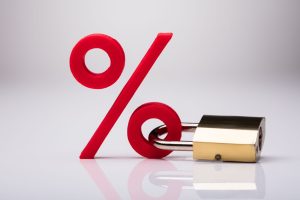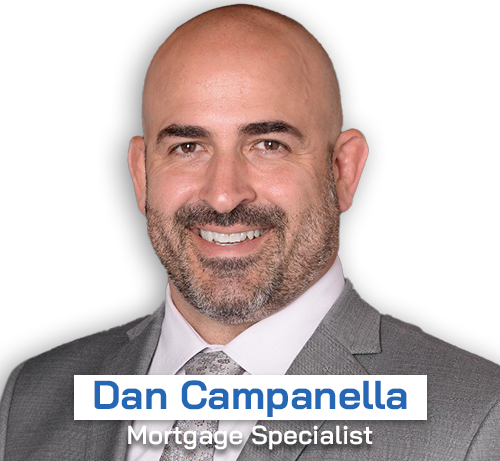
Understanding Mortgage Rate Locks
A mortgage rate lock, also known as rate protection, is a safeguard that keeps your interest rate from changing between the time you apply for a mortgage and the closing of your loan. By locking in your rate, you secure a specific interest rate, ensuring that it won’t increase even if market rates rise during the process. A rate lock can provide peace of mind and help you plan your budget effectively.
It’s important to note that a rate lock is typically valid for a specific period, usually between 15 and 60 days, depending on the lender and loan terms. If your loan doesn’t close within the lock period, you may have the option to extend the lock, but there could be associated fees. Understanding the details of your rate lock agreement is crucial to avoid surprises and make informed decisions.
Benefits of a Mortgage Rate Lock
Locking in your mortgage rate offers several advantages, including:
Rate Protection
The primary benefit of a rate lock is protection against rising interest rates. If rates increase after you’ve locked in your rate, you’ll still get the lower rate you secured. This can save you money over the life of your loan, especially if you’re financing a long-term mortgage.
Budgeting and Financial Planning
A rate lock allows you to plan your budget more accurately since you know the exact amount of your monthly mortgage payment. This stability can provide peace of mind and help you manage your finances effectively.
Avoiding Rate Volatility
Mortgage interest rates can be volatile, changing daily or even hourly. By locking in your rate, you shield yourself from these fluctuations and have a consistent rate throughout the loan process.
Protection during Loan Processing
The mortgage application and closing process can take time, sometimes several weeks or months. A rate lock ensures that your rate remains the same during this period, regardless of any market changes. This stability allows you to focus on other aspects of the loan process without worrying about potential rate increases.
While a rate lock provides significant benefits, there are also considerations to keep in mind when deciding whether to lock in your mortgage rate.
Factors to Consider before Locking Your Rate
Before making a decision, it’s important to consider the following factors:
Market Trends and Rate Fluctuations
Monitoring market trends can provide insights into whether interest rates are expected to rise or fall. If rates have been consistently increasing, it may be wise to lock in your rate to protect against further increases. On the other hand, if rates have been falling, you might consider floating your rate for some time to potentially secure a lower rate.
Loan Processing Time
Understanding the estimated time for loan processing is crucial when deciding when to lock in your rate. If the loan process is expected to take an extended period, it may be advisable to opt for a longer rate lock to avoid expiration before closing.
Potential Changes in Your Financial Situation
Your financial circumstances can impact your eligibility for the locked-in rate. Changes in your credit score or debt-to-income ratio during the lock period may affect the final interest rate offered by the lender. It’s important to communicate any significant changes in your financial situation to your lender to ensure that your rate lock remains valid.
Rate Lock Fees and Terms
Different lenders have varying policies regarding rate locks, including associated fees and terms. It’s essential to understand the specific details of your rate lock agreement, such as any fees for an extension or a float-down option. Discussing these aspects with your lender can help you make an informed decision.
Considering these factors will empower you to make the best decision for your financial circumstances. Now, let’s delve deeper into the process of locking your mortgage rate.
How to Lock In a Mortgage Rate
The process of locking in your mortgage rate is relatively straightforward. Here’s a step-by-step guide to help you navigate the process:
Step 1: Choose a Lender
Select a reputable lender with competitive rates and favorable terms. Research lenders, read reviews, and compare their offerings to find the best fit for your needs.
Step 2: Complete the Loan Application
Submit a comprehensive loan application to your chosen lender. Provide all the necessary documentation, including income verification, credit history, and any other required information.
Step 3: Review and Accept the Loan Estimate
Once your lender reviews your application, they will provide a Loan Estimate, which outlines the details of your loan, including the interest rate. Review the Loan Estimate carefully and ensure that you understand all the terms and conditions.
Step 4: Discuss Rate Lock Options
Consult with your lender about rate lock options. Inquire about the lock period, any associated fees, and whether a float-down option is available. Choose the lock period that aligns with your loan processing timeline.
Step 5: Lock in Your Rate
Once you’re satisfied with the terms, inform your lender that you’re ready to lock in your rate. They will provide the necessary paperwork to formalize the rate lock agreement. Review the agreement thoroughly before signing to ensure you understand all the terms and conditions.
Step 6: Monitor the Loan Process
Throughout the loan process, stay in close communication with your lender. Provide any requested documentation promptly and address any concerns or questions that arise. Maintaining open lines of communication will help ensure a smooth and timely closing.
By following these steps, you can navigate the rate lock process and secure a favorable interest rate for your mortgage.
Potential Considerations and Limitations
While a rate lock can provide stability and peace of mind, it’s important to be aware of potential considerations and limitations. Here are a few key points to keep in mind:
Changes to Loan Terms
A rate lock typically applies to specific loan terms outlined in the agreement. Any changes to the loan terms, such as the loan amount or type, may affect the validity of the rate lock. Consult with your lender before making any modifications to your loan application.
Expiration of Rate Lock
Rate locks have an expiration date, and if your loan doesn’t close within the lock period, you may need to pay a fee to extend the lock. It’s crucial to monitor the progress of your loan and ensure that it progresses smoothly to avoid any potential rate lock expiration issues.
Float-Down Options
Some rate lock agreements may offer a float-down option, which allows you to take advantage of a lower interest rate if it becomes available during the lock period. However, this option may come with additional fees or restrictions. Discuss the availability and terms of a float-down option with your lender, if applicable.
Impact of Credit Score Changes
Changes to your credit score during the rate lock period can impact the final interest rate offered by the lender. It’s important to maintain good credit behavior and avoid any significant changes to your credit profile during this time.
Understanding these considerations will help you navigate the rate lock process effectively and make informed decisions.
Locking in your mortgage rate can provide stability and protect you from rising interest rates during the loan process. By understanding the rate lock process, considering market trends, and communicating effectively with your lender, you can secure a favorable interest rate that aligns with your financial goals.
Remember, each lender may have different policies and terms regarding rate locks, so be sure to research and choose the lender that best fits your needs. By taking the time to understand the process and exploring your options, you’ll be well-equipped to make informed decisions and ensure a smooth and successful mortgage experience.
Contact Dan (954-336-1922) for a free consultation!
—
 About Dan Campanella – Mortgage Specialist
About Dan Campanella – Mortgage Specialist
Dan provides clients with years of proven experience and an abundance of financing options for their mortgages. His common sense approach and devotion to customer service is what sets him apart in the highly competitive mortgage industry. Dan prides himself on consistently delivering “referable services” to his clients, referral sources, and partners.

